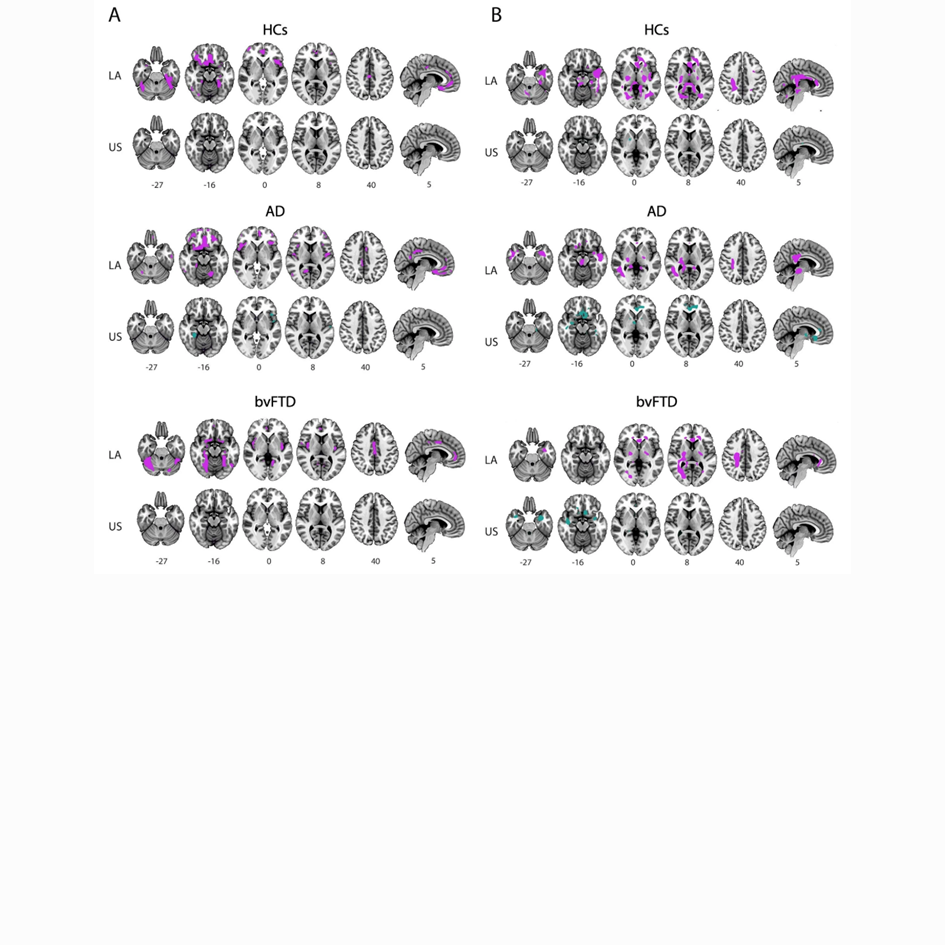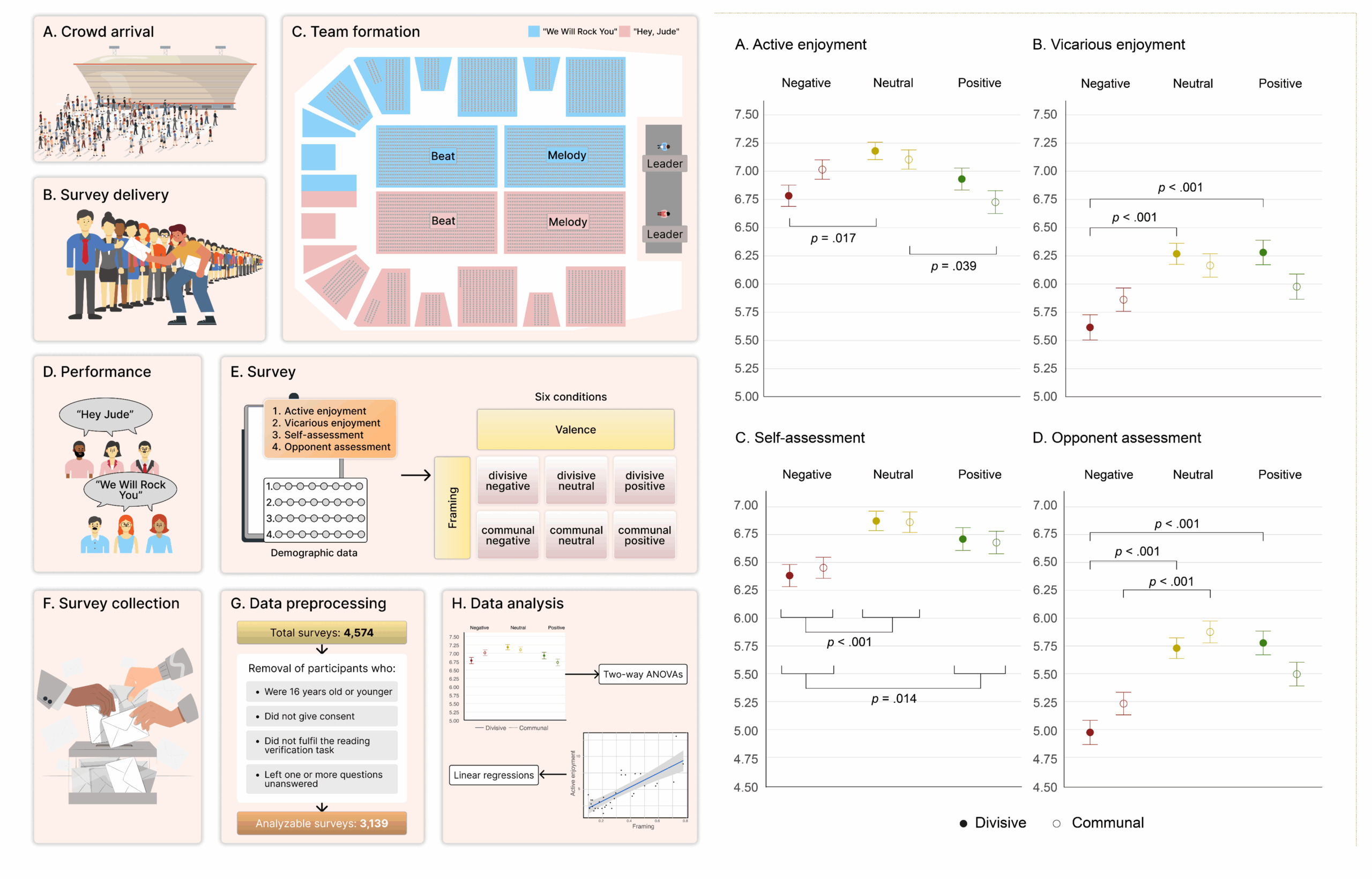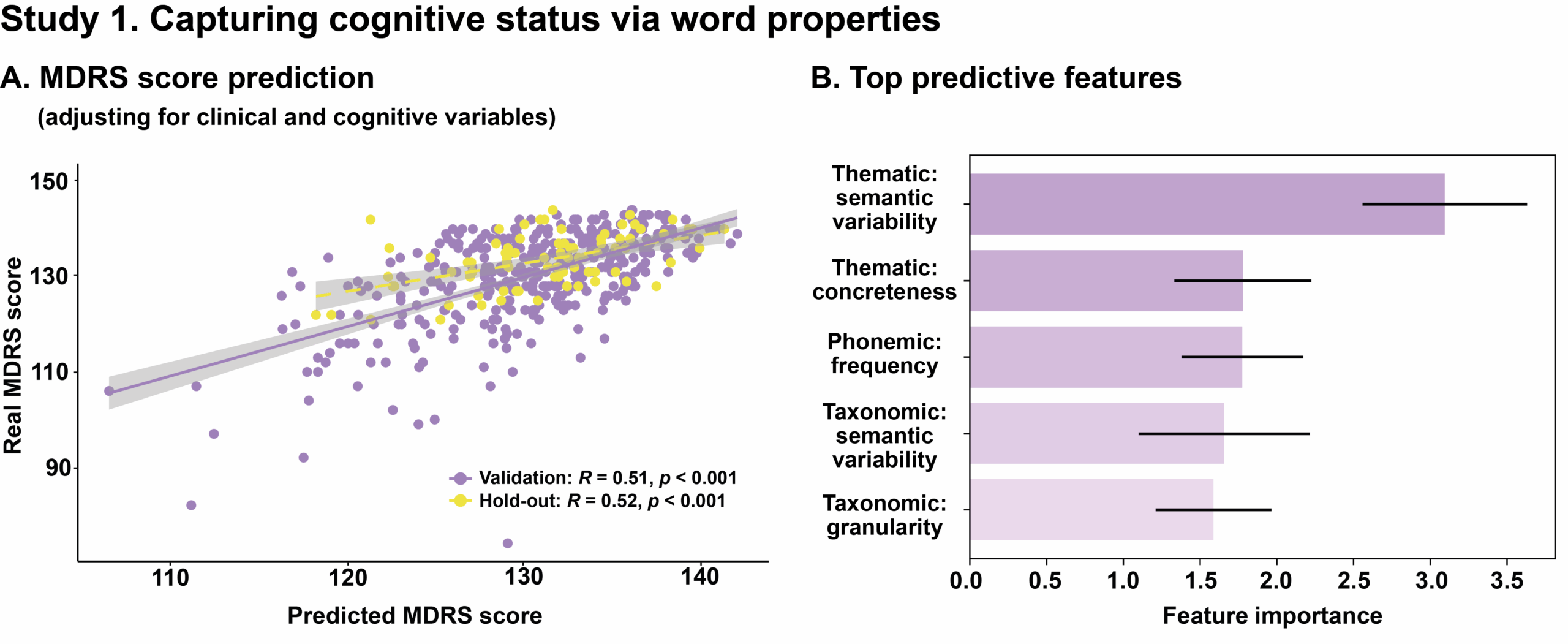White matter hyperintensities and their impact in brain structure and function in alzheimer’s disease and behavioral variant frontotemporal dementia across Latin America and the United States: a cross-sectional study
Altschuler, F., Canziani, V., Fraile-Vázquez, M. […] García, A. M. […] & González Campo, C. (2025). White matter hyperintensities and their impact on brain structure and function in Alzheimer’s disease and behavioral variant frontotemporal dementia across Latin America and the United States: A cross-sectional study. Alzheimer’s Research and Therapy 17, 188.
Introducción
Las hiperintensidades de la sustancia blanca (WMH) son una manifestación fundamental del envejecimiento normal y patológico y están potencialmente relacionadas con las diferencias geográficas en los exposomas sociales y físicos. Estudios anteriores no han examinado el impacto de la carga de WMH en la neurodegeneración y la cognición en controles sanos (CS) y pacientes con enfermedad de Alzheimer (EA) y variable conductual de demencia frontotemporal (vcDFT) en diferentes regiones geográficas. Este estudio abordó esta laguna evaluando el impacto de la carga de WMH en participantes con y sin demencia de América Latina (AL) y Estados Unidos (EE. UU.).
Métodos
El estudio incluyó a 994 participantes, entre los que se encontraban sujetos sanos (n = 402), con EA (n = 359) y con vcDFT (n = 233) de LA y EE. UU. Se evaluaron y compararon entre los grupos (sujetos sanos, con EA y con vcDFT) de LA y EE. UU. las WMH y su asociación con la atrofia de la materia gris (MG), evaluada a través del volumen de MG y el grosor cortical, utilizando un enfoque de imágenes cerebrales por vóxel (p < 0,05, error familiar corregido para comparaciones múltiples, tamaño mínimo del clúster = 50 vóxeles). Se empleó un análisis de regresiones múltiples para examinar las diferencias geográficas en la carga de WMH, las asociaciones entre WMH y GM, y el efecto de las WMH en el rendimiento cognitivo, evaluado mediante el examen Mini-Mental State.
Resultados
Solo en la cohorte de LA, una mayor carga de WMH se asoció con una mayor atrofia de la GM en todos los grupos (CS, AD, vcDFT), con un patrón neurodegenerativo específico que afectaba a las áreas orbitofrontal, cingulada y temporal. Los CS de LA mostraron una mayor carga de WMH que sus homólogos de EE. UU., y este efecto dependía de la atrofia de la GM. Por último, la carga de WMH tuvo un impacto negativo en el rendimiento cognitivo de los sujetos con demencia, observándose un mayor efecto en los sujetos con vcDFT de EE. UU.
Conclusión
Las WMH tienen un impacto más pronunciado en la neurodegeneración en toda la cohorte de LA, con un impacto peor en los CS, que también muestran una mayor carga de WMH que sus homólogos estadounidenses. Esto podría aumentar el riesgo de desarrollar demencia. Además, la carga de WMH afecta de manera diferente a la cognición, observándose un mayor efecto negativo en los sujetos con vcDFT de EE. UU. Estos hallazgos ponen de relieve las variaciones geográficas en las afecciones relacionadas con las WMH, lo que ofrece información valiosa para futuras investigaciones personalizadas.
Para acceder al artículo, hacé click aquí.
White matter hyperintensities and their impact in brain structure and function in alzheimer’s disease and behavioral variant frontotemporal dementia across Latin America and the United States: a cross-sectional study
Altschuler, F., Canziani, V., Fraile-Vázquez, M. […] García, A. M. […] & González Campo, C. (2025). White matter hyperintensities and their impact on brain structure and function in Alzheimer’s disease and behavioral variant frontotemporal dementia across Latin America and the United States: A cross-sectional study. Alzheimer’s Research and Therapy 17, 188.
Background
White matter hyperintensities (WMHs) are a core manifestation of normal and pathological aging and are potentially linked to geographical differences in social and physical exposomes. Previous studies have not examined the impact of WMHs burden on neurodegeneration and cognition in healthy controls (HCs) and patients with Alzheimer’s disease (AD) and behavioral variant frontotemporal dementia (bvFTD) across geographic regions. This study addressed this gap by assessing the impact of WMHs burden on participants with and without dementia from Latin America (LA) and the United States (US).
Methods
The study comprised 994 participants, including HCs (n = 402), AD (n = 359), and bvFTD subjects (n = 233) from LA and the US. WMHs and their association with grey matter (GM) atrophy, assessed through GM volume and cortical thickness, were evaluated and compared among groups (HCs, AD, and bvFTD) in LA and the US using a voxel-wise brain imaging approach (p < 0.05 family-wise error-corrected for multiple comparisons, minimum cluster size = 50 voxels). Multiple regressions analysis were employed to examine geographic differences in WMHs burden, WMHs-GM associations, and the effect of WMHs on cognitive performance, as assessed by the Mini-Mental State examination.
Results
In the LA cohort only, higher WMHs load was associated with greater GM atrophy across all groups (HCs, AD, bvFTD), with a specific neurodegenerative pattern involving orbitofrontal, cingulate, and temporal areas. HCs from LA showed a greater WMHs load than their US counterparts, and this effect was dependent on GM atrophy. Finally, WMHs burden negatively impacted cognitive performance in dementia subjects, with a greater effect observed in bvFTD subjects from the US.
Conclusion
WMHs have a more pronounced impact on neurodegeneration across the LA cohort, with a worse impact on HCs, which also show higher WMHs burden than their US counterparts. This could increase the risk of developing dementia. Moreover, WMHs burden differentially impacts cognition, with a greater negative effect observed in bvFTD subjects from the US. These findings highlight geographic variations in WMHs-related conditions, offering valuable insights for tailored future research.
To access the full paper, please click here.



